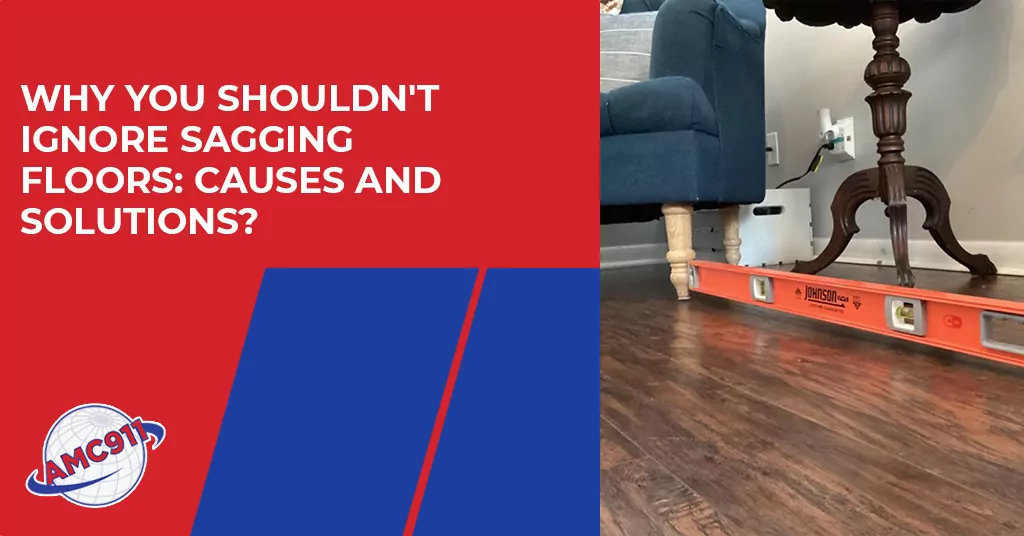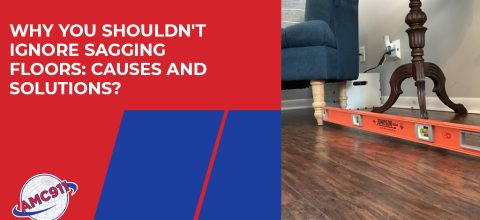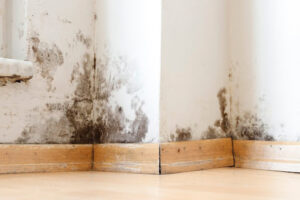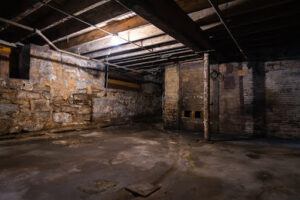Sagging floors are a common issue in older homes and can also affect newer homes. While they may seem like a minor inconvenience, sagging floors often signal deeper structural problems that can worsen over time. Ignoring them can lead to more damage and create safety risks for your family. Addressing the root cause early can help prevent costly repairs and keep your home stable.
If you’re experiencing sagging floors, AMC911 Foundation & Crawl Space Repair can help. Our experts specialize in diagnosing and fixing structural issues to restore your home’s safety. In this article, we’ll explain why sagging floors should never be ignored, their common causes, and the best repair solutions.
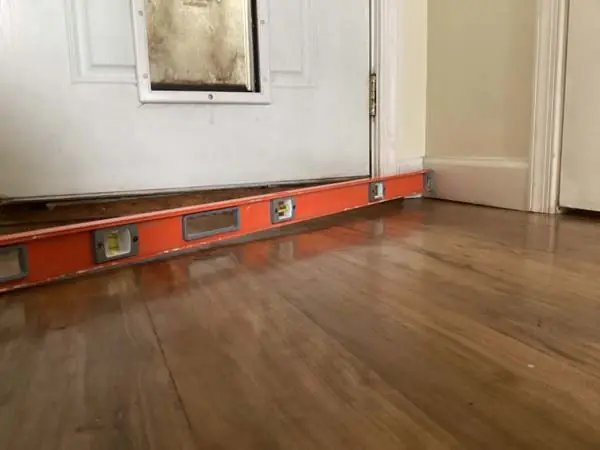
Why Sagging Floors Should Never Be Ignored
Sagging floors may seem like a minor inconvenience or an aesthetic issue, but they are often a warning sign of significant structural challenges that should not be ignored. Here’s a closer look at why addressing sagging floors is crucial:
Structural Damage
Sagging floors are often caused by underlying issues such as foundation settlement, damaged or undersized joists, or moisture-related problems like rot and mold. These factors compromise your home’s structural integrity. If ignored, they can lead to escalating damage, including misaligned doors and windows, cracked walls, and potentially costly repairs.
Safety Concerns
A sagging floor isn’t just unsightly—it’s a safety hazard. Uneven surfaces increase the risk of trips and falls, especially for young children, elderly residents, and guests. Moreover, sagging may indicate foundational or support beam weaknesses, which could jeopardize the stability of the entire structure over time.
Decreased Property Value
Structural issues like sagging floors raise a red flag to prospective buyers and can significantly reduce your property’s market value. A home inspection often uncovers these problems, leading to reduced offers or difficulty selling the property. Proactively addressing sagging floors maintains your home’s value and instills confidence in potential buyers.
Common Causes Of Sagging Floors
Sagging floors often signal deeper issues within a home’s structure. Each cause has unique characteristics and requires a tailored approach to repair. Below, we explore the most common causes of sagging floors in greater detail:
Foundation Settlement
Foundation settlement is a frequent cause of sagging floors, occurring when the foundation of a home sinks unevenly into the ground. This issue often arises due to shifting soil, poor soil compaction during the construction, or changes in moisture levels in the ground. For example, expansive soils can shrink during dry periods and swell during wet ones, creating instability in the foundation. Uneven settlement pulls the structure out of alignment, leading to sloping or sagging floors in the levels above. Left unchecked, this can worsen, causing cracks in walls, sticking doors, and more extensive structural problems.
Moisture Damage
Excess moisture is another major contributor to sagging floors, particularly in homes with crawl spaces or basements. When water infiltrates these areas due to poor drainage, plumbing leaks, or high humidity, it can compromise the wooden beams and joists that support the floor. Over time, damp conditions encourage the growth of mold and rot, which weaken the wood and reduce its ability to bear weight. Additionally, moist environments can foster pest infestations, compounding the damage. Homes with inadequate ventilation or drainage systems are especially vulnerable to this damage.
Weakened Joists
Floor joists, the wooden beams that provide structural support for flooring, can weaken due to age, exposure to moisture, or insect damage. As wood ages, it naturally loses some of its strength, which can result in sagging. Moisture accelerates this process, leading to wood rot and reduced durability. Insect infestations, such as carpenter ants or termites, can further compromise the integrity of joists, hollowing them out and leaving them incapable of bearing the necessary load. If these issues are not addressed right away, the damage can spread, impacting larger sections of the flooring system.

Improper Construction
Sometimes, sagging floors result from flaws in the home’s original construction. If floor joists are too small or spaced too far apart, they may not be capable of supporting the structure’s weight and its occupants over time. Additionally, if joists and beams were installed incorrectly or without adequate reinforcement, sagging becomes almost inevitable as the house settles. Homes built without consideration for long-term structural demands may experience these issues sooner, requiring early intervention to prevent further deterioration.
Real-world Examples Of Homes With Sagging Floors
Sagging floors are more than just a visual annoyance—they often signal significant structural issues that can affect a home’s safety and integrity. Real-world examples highlight how common problems like moisture damage, excess weight, and poor drainage can lead to sagging floors and the extensive measures needed to resolve them.
Take, for instance, a 1955 ranch-style home in Virginia Beach. Over the decades, the house experienced issues that culminated in sagging floors. A leaking tub and shower led to water damage, causing the bathroom floor to rot. Adding to the stress, the original flooring included four inches of mortar under tiles, an outdated design that added immense weight to the floor joists. Over time, the joists weakened and sagged, even pulling electrical wires tight against the joists—a clear safety hazard.
Poor drainage around the home worsened the situation. Rainwater seeped through the brick and mortar, leaving the crawl space saturated. Standing water under the house created a low-tide effect, compounding the structural strain. This combination of moisture, weight, and weakened supports required comprehensive intervention.

The solution involved a multi-step process. First, the drainage issues were addressed by installing a trench around the foundation and a drainage system leading to a cistern. Next, foundation jacks were added beneath the main exterior wall beam to lift and stabilize the sagging floors. Damaged floor joists under the bathrooms were removed and replaced, and a new plywood subfloor was installed to restore the flooring’s integrity. This systematic approach resolved the sagging floors and ensured the home was protected from future damage.
This case underscores the importance of promptly addressing sagging floors. The underlying causes—whether moisture damage, structural stress, or improper construction—require careful evaluation and professional repairs. Ignoring these issues can escalate damage, safety risks, and costly repairs.
Best Solutions For Repairing Sagging Floors
Repairing sagging floors effectively requires identifying the root cause and applying the most appropriate solution. Here are the most common methods on how to fix sagging floors to their original stability:
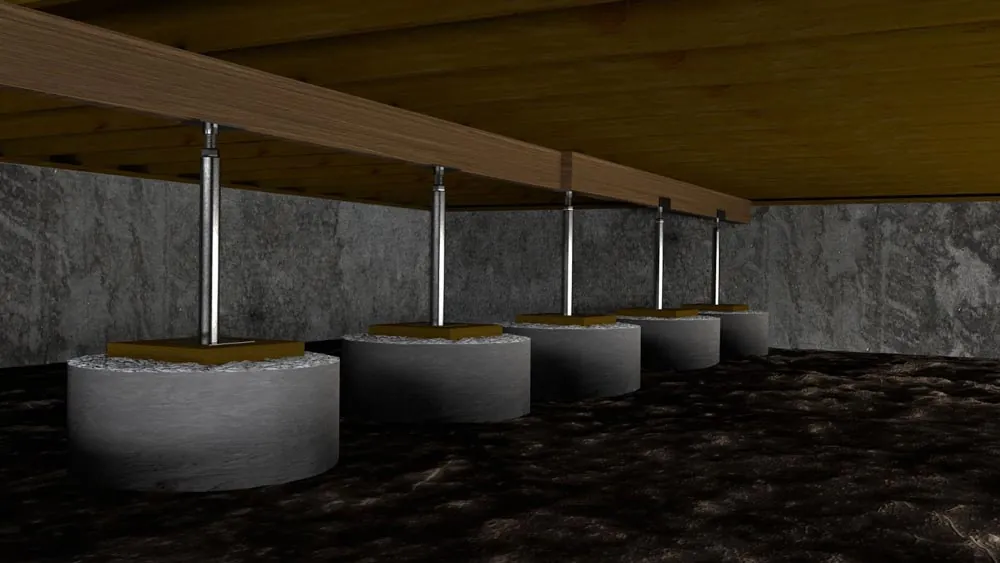
Crawl Space Jacks
Jacks are an effective crawl space solution for floors sagging due to insufficient support or weakened joists. These adjustable jacks are installed beneath the affected area and can lift the floor back into place. Once installed, they provide long-term reinforcement, ensuring that the joists and subfloor remain stable under normal loads.
Foundation Leveling
When sagging floors result from foundation settlement, foundation leveling techniques such as helical piers or push piers are often necessary. These piers are driven deep into the ground to stabilize the foundation and lift it up to its original position. By addressing the root cause of the foundation settlement, this method prevents further structural issues and protects the integrity of the entire home.
Joist Reinforcement
Weakened or damaged floor joists often require reinforcement to restore their structural capacity. Sister joists, which are new beams attached to the existing ones, can strengthen the floor and prevent further sagging. For additional stability, supplemental support beams may also be installed to distribute the weight more evenly across the floor.
Moisture Control Solutions
Excess moisture in crawl spaces or basements can weaken wooden joists, making moisture control a crucial part of the repair process. Solutions like vapor barriers, crawl space dehumidifiers, encapsulation, drainage systems, and foundation waterproofing work together to maintain a dry environment. These measures not only prevent further damage but also help to preserve the longevity of any repairs made to the floor’s support system.
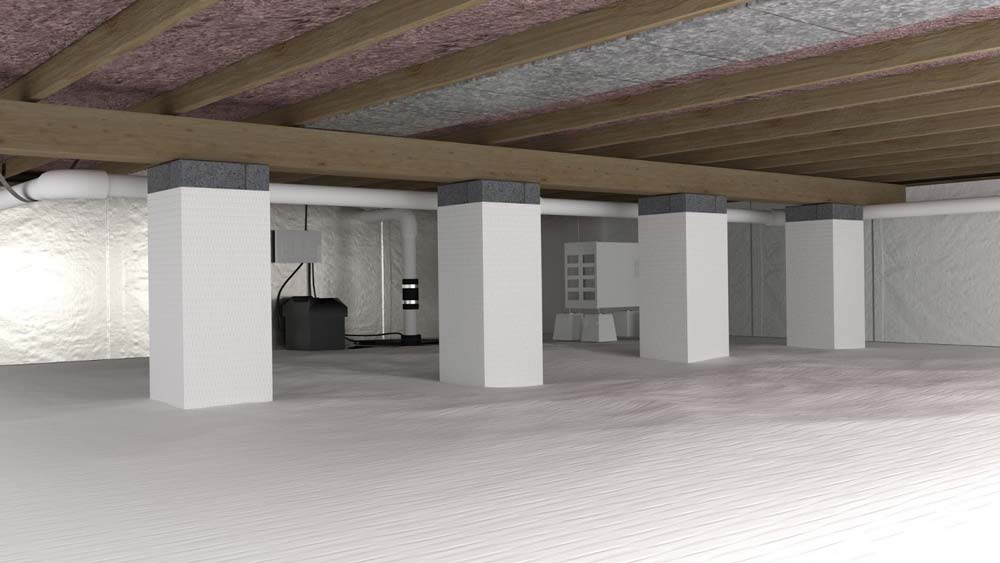
Long-term Benefits Of Repairing Sagging Floors Early
Repairing sagging floors as soon as the issue is noticed offers several long-term benefits for homeowners:
- Cost Savings: Addressing the issue early prevents further damage to the foundation, joists, and other structural elements of your home, which can save you from costly home and foundation repairs in the future.
- Improved Structural Stability: Fixing sagging floors restores the strength and stability of your home’s structure, ensuring your family’s safety and protecting your property’s long-term value.
- Enhanced Home Value: Homes with stable, even floors are more appealing to potential buyers. Repairing sagging floors can increase the resale value of your home by addressing a key structural issue.
Conclusion
Sagging floors often indicate underlying structural problems that should not be ignored. Whether caused by foundation settlement, moisture damage, or weakened joists, addressing foundation problems and sagging floors early can prevent more serious issues down the road. By investing in professional repair solutions like crawl space jacks, foundation leveling, and moisture control, homeowners can restore their floors’ stability and protect their home’s value. Contact AMC911 today for expert solutions

